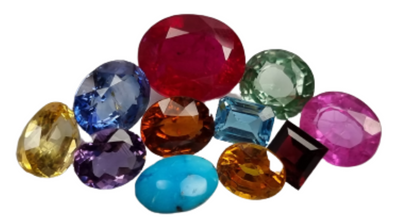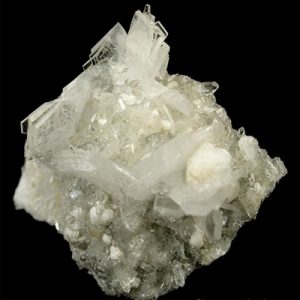Zektzerite: Gemstones Information
Zektzerite is a relatively rare mineral that belongs to the eudialyte group, named after the geologist and mineralogist George E. Zektzer. It was first discovered in 1968 at Mont Saint-Hilaire, Quebec, Canada. Zektzerite is a complex silicate mineral with the chemical formula NaLiZrSi6O15(OH)3F. It is known for its vibrant colors, typically ranging from pink to reddish-brown, and its association with alkaline igneous rocks and pegmatites.
Let’s explore the information and potential benefits associated with zektzerite:
Chemical Composition: Zektzerite is primarily composed of sodium (Na), lithium (Li), zirconium (Zr), silicon (Si), oxygen (O), hydroxyl (OH) ions, and fluorine (F) atoms arranged in a complex crystal structure. Its chemical formula reflects its composition, consisting of sodium, lithium, zirconium silicate, hydroxyl, and fluorine ions. Zektzerite crystals typically occur as prismatic or tabular forms with a vitreous luster.
Physical Properties: Zektzerite crystals often exhibit a pink to reddish-brown coloration, although variations in hue and intensity may occur depending on impurities and crystal structure. It has a Mohs hardness of around 5 to 5.5, making it relatively hard compared to other minerals. Zektzerite is typically translucent to transparent and may exhibit a vitreous or greasy luster. It is commonly found in pegmatitic rocks and alkaline igneous complexes.
Occurrence: Zektzerite is commonly found in association with other minerals in pegmatites, alkaline igneous rocks, and hydrothermal veins. Significant deposits of zektzerite have been discovered in various locations around the world, including Mont Saint-Hilaire in Quebec, Canada, and the Kola Peninsula in Russia. Zektzerite often occurs alongside other rare minerals such as eudialyte, aegirine, and nepheline.
Industrial Applications: Zektzerite has limited industrial applications due to its rarity and relatively low abundance. However, it is sometimes used as a minor component in ceramics, glassmaking, and gemstone cutting. Zektzerite-based materials may offer good thermal stability and resistance to high temperatures, making them suitable for use in refractory applications.
Metaphysical Properties: In metaphysical and holistic healing practices, zektzerite is believed to possess various beneficial properties. It is often associated with promoting feelings of love, compassion, and emotional healing. Zektzerite is said to have a calming effect on the mind and body, helping to alleviate stress, anxiety, and negative emotions. Additionally, zektzerite is believed to enhance spiritual growth, intuition, and inner peace.
Collectibility: Zektzerite specimens are sought after by mineral collectors and enthusiasts for their rarity and unique crystal habits. Fine-quality zektzerite crystals, particularly those with well-defined prismatic or tabular forms and vibrant colors, can command premium prices in the mineral market. Collectors often seek out zektzerite specimens from classic localities or those exhibiting rare crystal habits or associations with other minerals.
Environmental Considerations: Zektzerite is considered a low-toxicity mineral and does not pose significant environmental hazards. However, like all minerals, proper handling and disposal practices are necessary to minimize any potential environmental impact. Zektzerite mining activities are typically limited due to its rarity and the relatively small scale of its occurrences.
In summary, zektzerite is a rare and intriguing mineral with unique properties and potential benefits. Whether appreciated for its geological significance, collectibility, metaphysical properties, or industrial applications, zektzerite continues to captivate individuals around the world with its beauty, rarity, and versatility.





